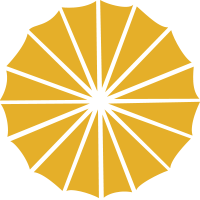History of Vietnamese Religion and Belief
The Vietnamese folk beliefs since the ancient time consist of belief in fertility, worship of nature and worship of man. Human beings need to be reproduced, crops need to be lushly green for the nourishment and development of life, so belief in fertility came into existence.
Water-rice agriculture that depended much on natural factors ignited the belief of worshiping nature. In Vietnam, this belief was polytheism and respect for goddess, and worshipp of animals and plants as well. A research book published in 1984 listed 75 goddesses, mostly matriarchal goddesses, also called Mau (ancient people not only worshipped the Creator but also Mau Cuu Trung which was a female Creator, as well as Mau Thuong Ngan, River Goddess and so on). Regarding botany-worshiping beliefs, the rice plant was most venerated, the next were the banyan-tree, the areca-tree, the mulberry tree and the gourd. In respect of animal-worshiping beliefs, unlike nomadic culture that worships fierce wild animals, Vietnamese tend to worship gentle species of animals like stag, deer, frog, especially those which are easy to come by in the riverside regions like water-birds, snakes, and crocodiles. The Vietnamese proclaimed themselves as belonging to the Hong Bang family line and the Tien Rong breed (Hong Bang was the name of a huge species of water-bird, Tien, or Fairy, was deification of an egg-laying species of bird, Rong, or Dragon, was an abstract image of snake and crocodile). The ascending dragon that was born in the water is meaningful and special symbol of the Vietnamese nation.
Among the human-revering beliefs, the custom of worshiping ancestors is the most popular, which nearly become one belief of the Vietnamese (also called Dao Ong Ba in the Cochinchina). The Vietnamese choose the death-day rather than the birthday to hold a commemorative anniversary for the deceased. Every family worships Tho cong, or the God of Home, who takes care of the home and blesses the family. Every village worships its Thanh hoang, the God of the village, who protects and guides the whole village (the Vietnamese always honour the people who rendered distinguished services for villagers or national heroes who were born or died in the village to be their Thanh hoang). The whole nation worships the very first kings, sharing the common ancestors' death anniversary (the Ritual of Hung Temple). Particularly, the worship of Tu Bat Tu, or the Four Immortal Gods, namely, God Tan Vien (preventing flooding), God Giong (resisting and defeating foreign invaders), God Chu Dong Tu (together with his wife growing out of poverty to consistently build his fortune) and Goddess Lieu Hanh (heavenly princess who left Heaven for the earth in the yearning for happiness) has been regarded as extremely beautiful national values.
Although turning into superstition in some specific cases, folk beliefs have lasted consistently and mixed with orthodox religions.
Therevada Buddhism might have been imported directly into Vietnam from India through sea routes since the 2nd century A.D. Vietnamese Buddhism stays on earth rather than ascends up to heaven, attaches to exorcism and prayers for wealth, happiness and longevity rather than heads toward nirvana. Only when Maharayana Buddhism approached the country from China did Vietnamese monks have the chance to carry out in-depth study of Buddhism; however, separate schools were later formed, such as Truc Lam Buddhist School which attaches importance to the Buddha inside the human heart. In the Ly-Tran dynasties, Buddhism, though having reached its peak, still embraced both Taoism and Confucianism to create a cultural face with "the three religions existing at the same time". Over ups and downs throughout the history, Buddhism has become absolutely familiar to the Vietnamese; according to the 1993 stastistics, there were up to some 3 million Buddhist believers and some other 10 millions frequently going to the pagoda for worshipping the Buddha.
Under the Chinese domination, Confucianism had yet to gain a position in the Vietnamese society. The official adoption of Confucianism had not been recorded until 1070 when King Ly Thai To built Van Mieu (the Temple of Literature) to worship Chu Cong and Khong Tu (confucius). In the 15th century, due to the need of constructing a unified nation, a centralized administration and a social order, Confucianism took the place of Buddhism to become a national religion under the Le dynasty. Confucianism, mostly Song Confucianism, that took root deep into the social and political structure, the system of education and examinations and the circle of Confucian scholars gradually dominated social and moral life. However, Confucianism was only accepted to Vietnam in specific factors, particularly on politics and morality, rather than its entire system.
Taoism penetrated Vietnam at roughly the end of the 2nd century. Since the Vo Vi (letting things take their own course) doctrine bore the thought of resisting the Chinese rulers, it was used as a weapon against the Northern feudalism. This religion also contained factors of magic and mystery, so it fits human subconscience and primitive beliefs. Many Confucianists also admired Taoism?s tendency of enjoying quietness and joyful leisure. However, Taoism has long been regarded as an extinct religion that only left vestiges in folk beliefs.
Christianity came to Vietnam in the 17th century as an intermediary of the Western culture and colonialism. It made use of the favorable opportunity in which feudalism was in crisis, Buddhism was depraved and Confucianism was in deadlock to become a spiritual relief of a part of the population. However, this religion failed to integrate into the Vietnamese culture for a long time. Christians had to set up an altar dedicated to Jesus Christ right at their homes. Only when the Gospel was introduced into Vietnam, Christianity was able to gain a position. In 1993, there were 5 million Catholics and nearly half a million Protestants.
Foreign religions imported to Vietnam did not exterminate the local folk beliefs, but they mixed with each other to derive specific variants for both sides. For example, Taoism could not lower the women?s role, which was reflected by widespread worship of Mau (Goddess). The features of polytheism, democracy, and community are manifested by the worship of groups of ancestors, and pairs of gods. Entering a pagoda, people can easily recognize that not only Buddhas but also gods and even human are worshiped there. Perhaps, only in Vietnam, there were legends that a toad dares to sue Heaven or a human being marries a fairy. These are the prominent features of Vietnamese beliefs.




